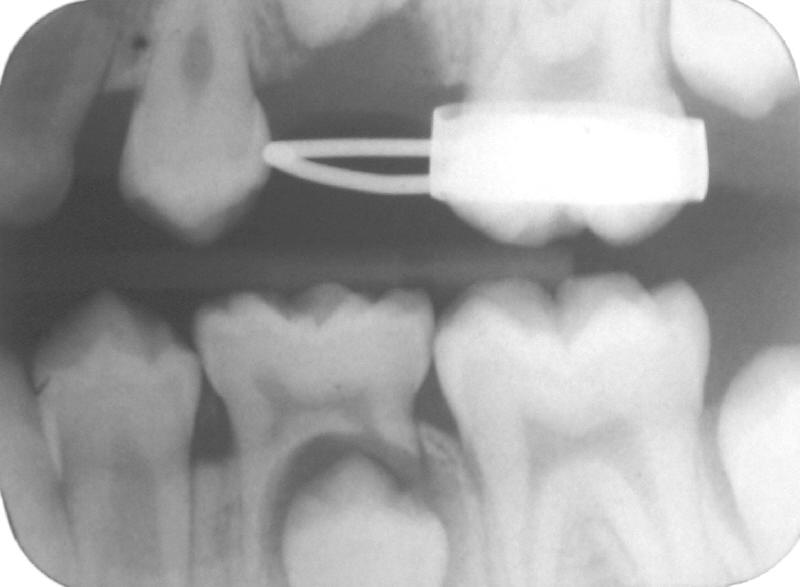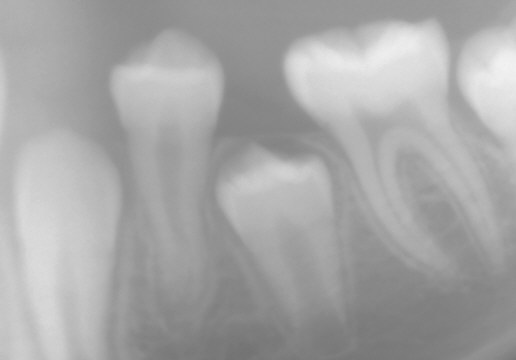 |
||
|
^ Fig.1 |
Fig.2 |
Fig.3 |
 |
|
|
|
Fig.4 |
Fig.5 |
Fig.6 |
Dental Education Lecture: Space Regainer
 |
||
|
^ Fig.1 |
Fig.2 |
Fig.3 |
 |
|
|
|
Fig.4 |
Fig.5 |
Fig.6 |
In the last lecture, we discuss that we will gradually lose space for an adult tooth if we do not install space maintenance immediately after a baby tooth is extracted. What should we do? We should restore the space by using a special device called space regainer. To understand mechanism of the latter (Fig.4-6), we need to show you what space maintenance (Fig.1-3) looks like.
Fig. 1 (a dental X-ray) shows one side of upper back teeth of a ~10 year-old kid. The baby tooth (E, arrowhead) has a big cavity. We need to take it out. Above E is an adult tooth (which will replace E later, 5, 2nd premolar). To the left of E is 4, also an adult tooth, 1st premolar. To the right of E is 6, an adult 1st molar. For tooth labeling, please refer to Space Maintenance. Before extraction, we need to take impression, get a stone model and make a space maintenance (shown in Fig.2). This is the most common and most simple space maintenance, called band and loop. The band sits on the 1st molar; the loop welds into the band and rests against the 1st premolar. The lab technician removes the tooth E from the model before fabrication of space maintenance. Then the doctor extracts E and cements the band and loop in the mouth as shown in Fig. 3. The latter is a type of X-ray often used in dentistry. We call it bitewing, showing crowns both upper and lower teeth (mainly crowns). Another dental X-ray is called PA, periapical, showing both the crowns and roots of either upper (Fig.1) or lower (Fig.4) teeth.
Fig.4 shows lower back teeth of a 11 year-old boy. He did not get a space maintenance immediately after E extraction. There is not enough space for the tooth 5 to erupt (in the middle of Fig.4). Before 5 eruption into a wrong position as shown in Fig. 5 of Lecture Space Maintenance, we have to enlarge the space by a space regainer. A typical space regainer is shown in Fig.5 in this lecture. In stead of one band in space maintenance, there are two bands in space regainer. The two bands are connected with two thick wires with compressed springs. The dentist cements the space regainer in the mouth. The springs push the two anchoring (banded) teeth away from each other to make room for the tooth in between, i.e., underneath. In this case, more than enough space is created in 9 months (Fig.6). The boy has to return to office, because one side of a wire is broken with loss of a spring. The other spring remains in place. Anyway, we remove the space regainer, since it has accomplished its mission. The function of space maintenance is to keep the space we already have, whereas that of space regainer is to regain the space lost due to delay in installing space maintenance. What will happen if we fail to install space regainer when we need to? We will discuss this issue later. We are also going to show you another case in which space regainer is used as simplified braces to fix minor tooth misalignment.
Xin Wei, DDS, PhD, MS 1st edition 01/25/2009, last revision 03/20/2010